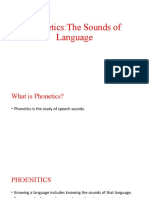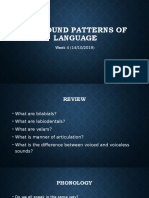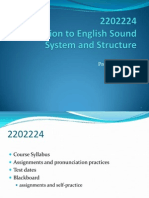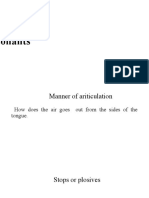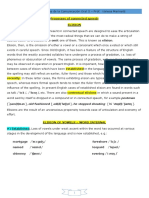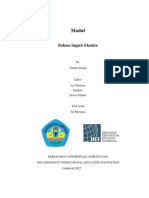0% found this document useful (0 votes)
10 views21 pagesIntroduction To Phonetics
Phonetics is the study of speech sounds, focusing on their physical properties and how they are produced and perceived. It includes articulatory, acoustic, and auditory phonetics, and utilizes the International Phonetic Alphabet (IPA) for accurate pronunciation across languages. The document also discusses pronunciation challenges, such as silent letters, homophones, aspiration, and the influence of accents on English pronunciation.
Uploaded by
dazedazed4Copyright
© © All Rights Reserved
We take content rights seriously. If you suspect this is your content, claim it here.
Available Formats
Download as PDF, TXT or read online on Scribd
0% found this document useful (0 votes)
10 views21 pagesIntroduction To Phonetics
Phonetics is the study of speech sounds, focusing on their physical properties and how they are produced and perceived. It includes articulatory, acoustic, and auditory phonetics, and utilizes the International Phonetic Alphabet (IPA) for accurate pronunciation across languages. The document also discusses pronunciation challenges, such as silent letters, homophones, aspiration, and the influence of accents on English pronunciation.
Uploaded by
dazedazed4Copyright
© © All Rights Reserved
We take content rights seriously. If you suspect this is your content, claim it here.
Available Formats
Download as PDF, TXT or read online on Scribd
/ 21








